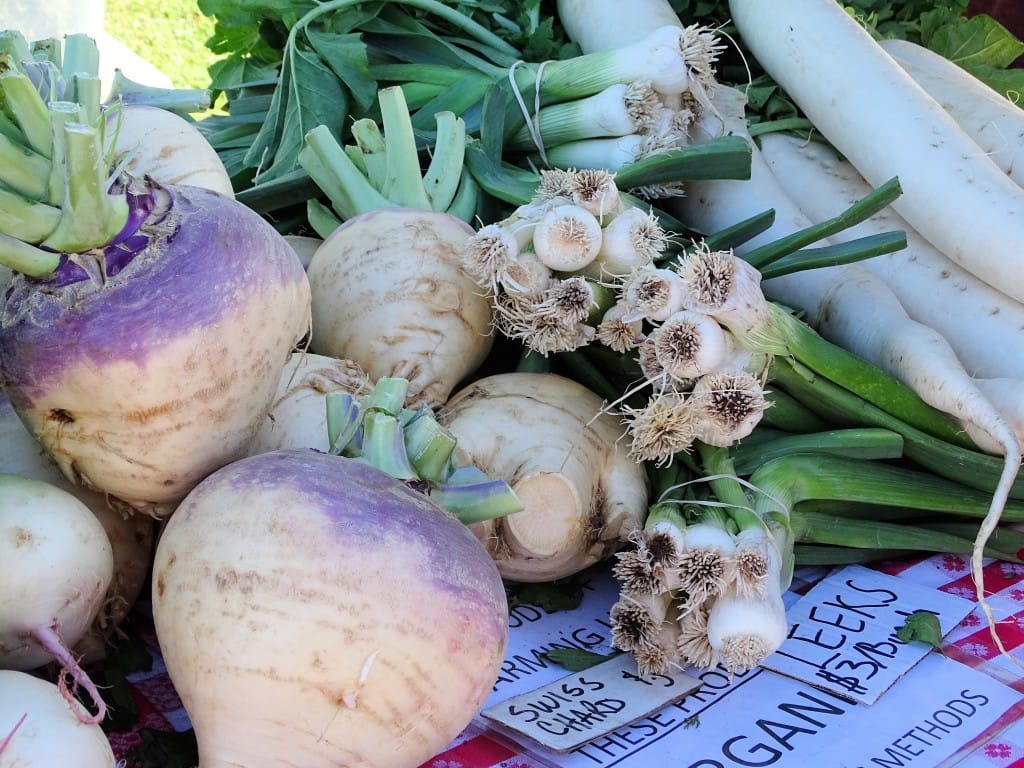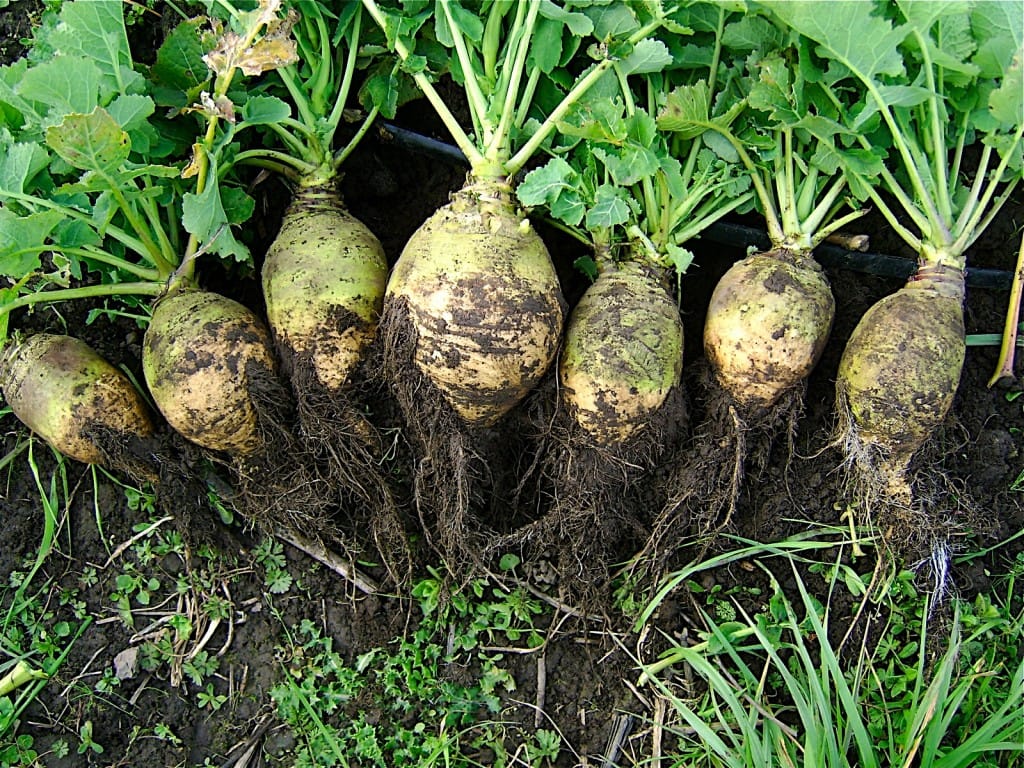Source(s): Alex McCrackin, College of Agricultural and Environmental Sciences (Extension Master Gardener).
 Rutabaga, or Swedish Turnip, Brassica napobrassica, as a member of the mustard family, is related to cabbage and cauliflower. It probably originated in the Middle Ages from a cross of turnip and cabbage, but it differs from the common turnip in several respects.
Rutabaga, or Swedish Turnip, Brassica napobrassica, as a member of the mustard family, is related to cabbage and cauliflower. It probably originated in the Middle Ages from a cross of turnip and cabbage, but it differs from the common turnip in several respects.
The rutabaga, in contrast to the turnip, has a distinct leafy neck, smooth bluish leaves, and a root which is not only larger but has a denser and finer texture than that of the turnip. In terms of nutrition the top is an excellent source of vitamins A and C, and the root is high in vitamin A. Also, rutabagas are low in sodium.
Suggested Varieties
The most popular and widely available variety of rutabaga is American Purple Top, which produces a yellow-fleshed root with a tender, fine grain (88 days). Macomber, a white root variety, is somewhat sweeter than the yellow types (92 days). Two other varieties less frequently available are Monarch and Sweet Perfection White. Laurentian is a also a very dependable variety.
Getting Started
Because rutabaga is a cool season crop, in our area the seeding is best done from mid-July into August to allow vigorous growth during the lower temperatures of late fall and early winter. The ripening period should then come before the first frost, which, in any case, should not harm this cold-resistant crop. Harvesting should be completed before the first hard freeze.
Rutabagas require a well-worked soil and fertilizers similar to turnips and beets. Soil test for lime requirements. In clay soils, working in liberal amounts of compost or other organic matter may be necessary to allow the root to develop to its full and proper shape. Apply a 5-10-15 or 6-12-12 fertilizer at the rate of approximately 3-4 pounds per 100 square feet. Split applications are best. Higher levels of nitrogen will cause the plant to develop its leafy top at the expense of the root.
Sow seeds 1/2″ deep and 1/2″ apart in rows spaced 15-18″ apart. Thin the young plants to 6-9″. Frequent shallow cultivation is necessary until harvest. When the size of the plot permits, hand weeding is recommended; this practice avoids damaging the developing root. Water deeply every five to seven days during dry periods.
Near the maturity time stated on the seed package examine several plants to see how they have developed; pull rutabagas when they reach maturity and, if possible, when the soil is somewhat dry to minimize dirt on the side roots.
Insects and Diseases
Rutabagas are affected by the same insects and diseases as cabbage and turnips. Aphids, root maggots and flea beetles are the most common insect pests. Diseases such as club root, black root and anthracnose are seldom serious problems. Consult your County Extension Service for information and literature to identify and control specific pests or diseases. Before using any chemicals, read and follow all label directions and precautions.
Storage
To store rutabagas for an extended period, trim the crowns, side roots, and tap roots; place in a cellar or other place with a very cool temperature and high humidity. Heated basements are not suitable for storage because the low humidity tends to dry and shrivel the roots. Waxed roots kept in the refrigerator crisper can last up to three months. Home waxing of roots is not recommended.
Enjoying the Harvest
Rutabaga tops may be prepared the same as collard and turnip greens. Reducing the boiling time will retain more of the flavor and nutrients in the greens and at the same time keep the texture crisp.
Treating rutabagas much like potatoes tremendously increases the variety of courses available. Traditionally, rutabaga has been peeled and boiled with a teaspoon of sugar to enhance the flavor. Other possibilities include baking, mashing and french flying. The addition of fresh herbs such as mint, basil, or dill along with butter or margarine adds new zest to an old favorite.
Resource(s): Vegetable Gardening in Georgia
Center Publication Number: 42
- Growing Rutabagas - September 24, 2013